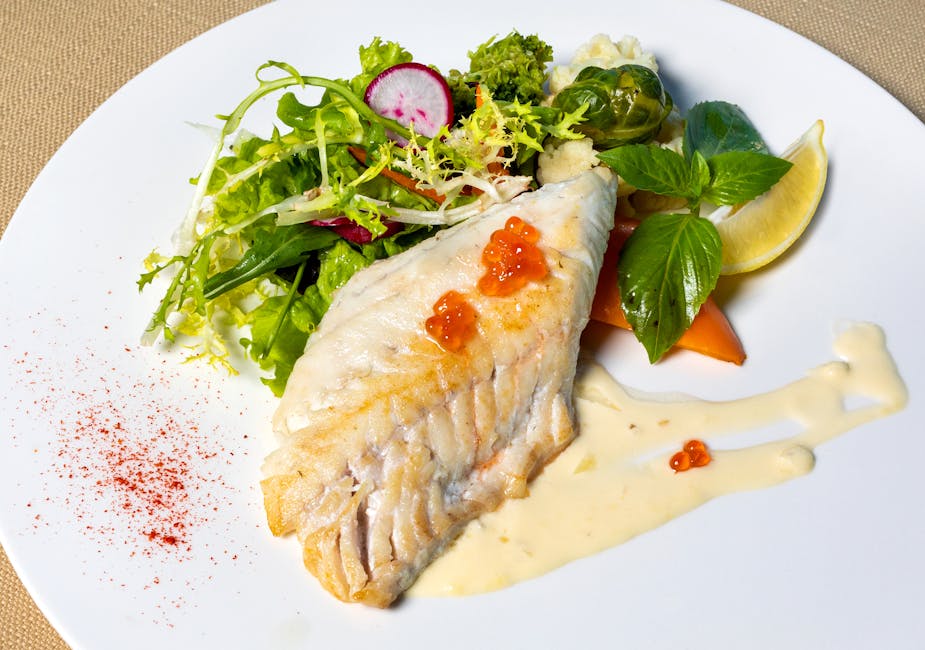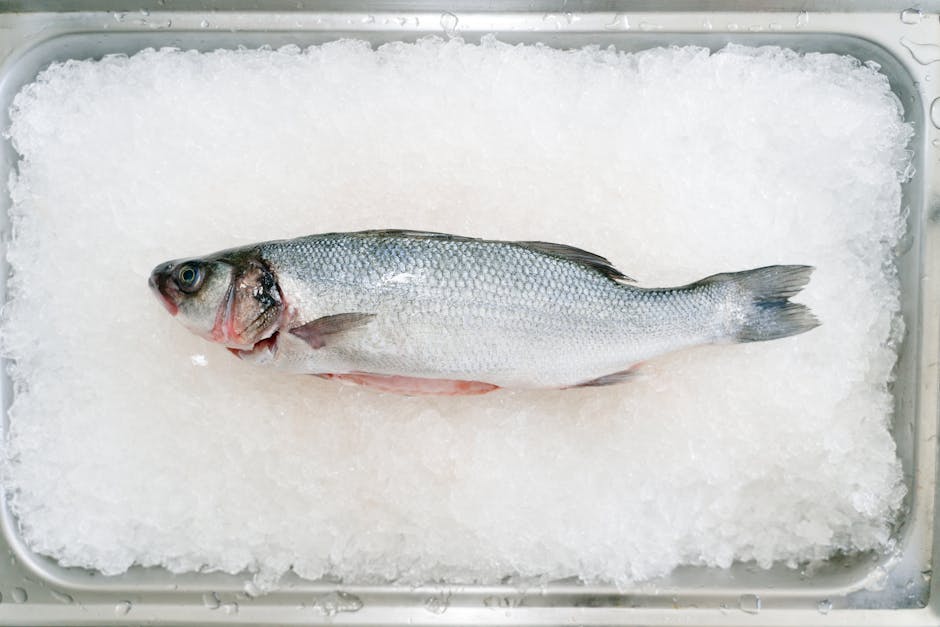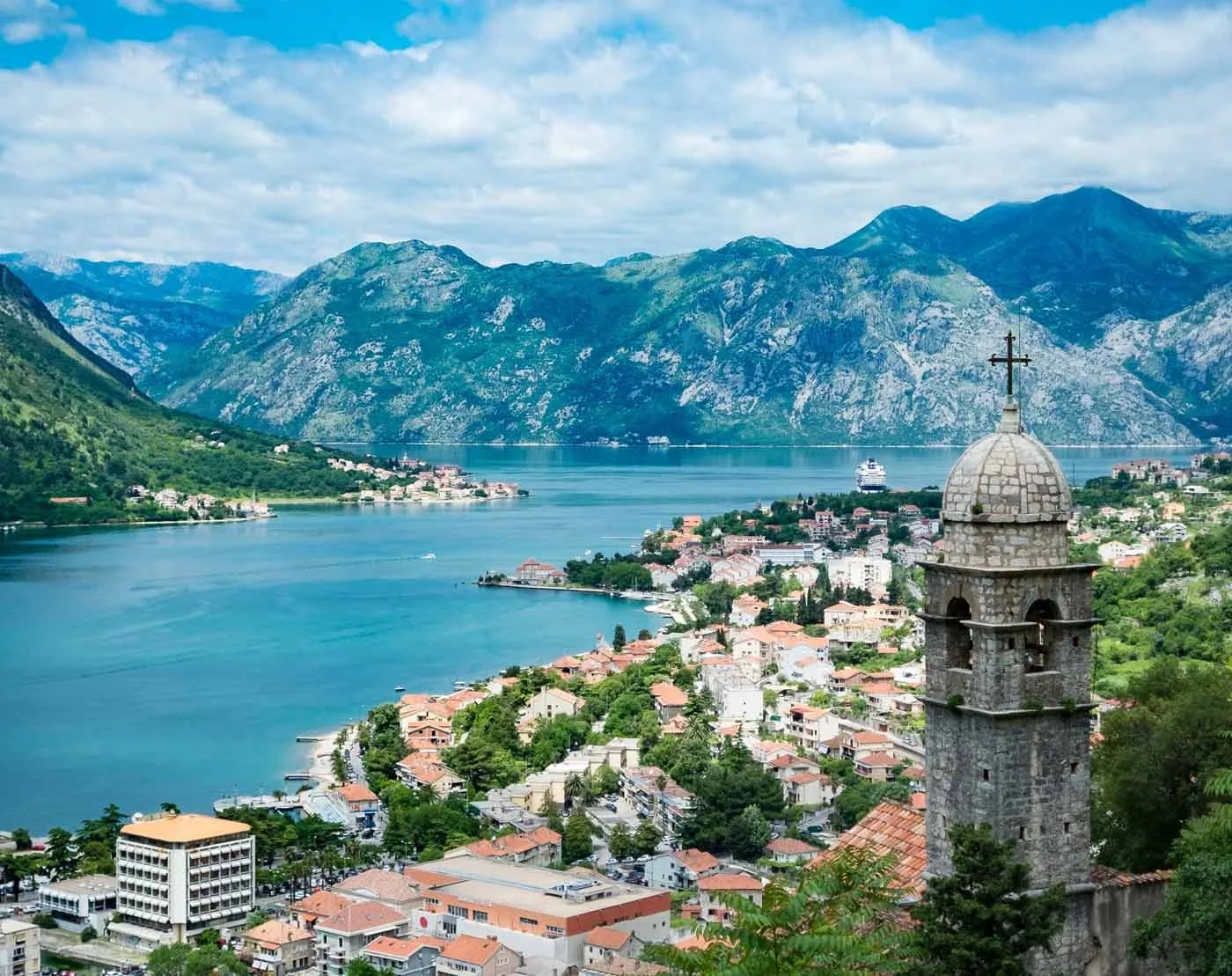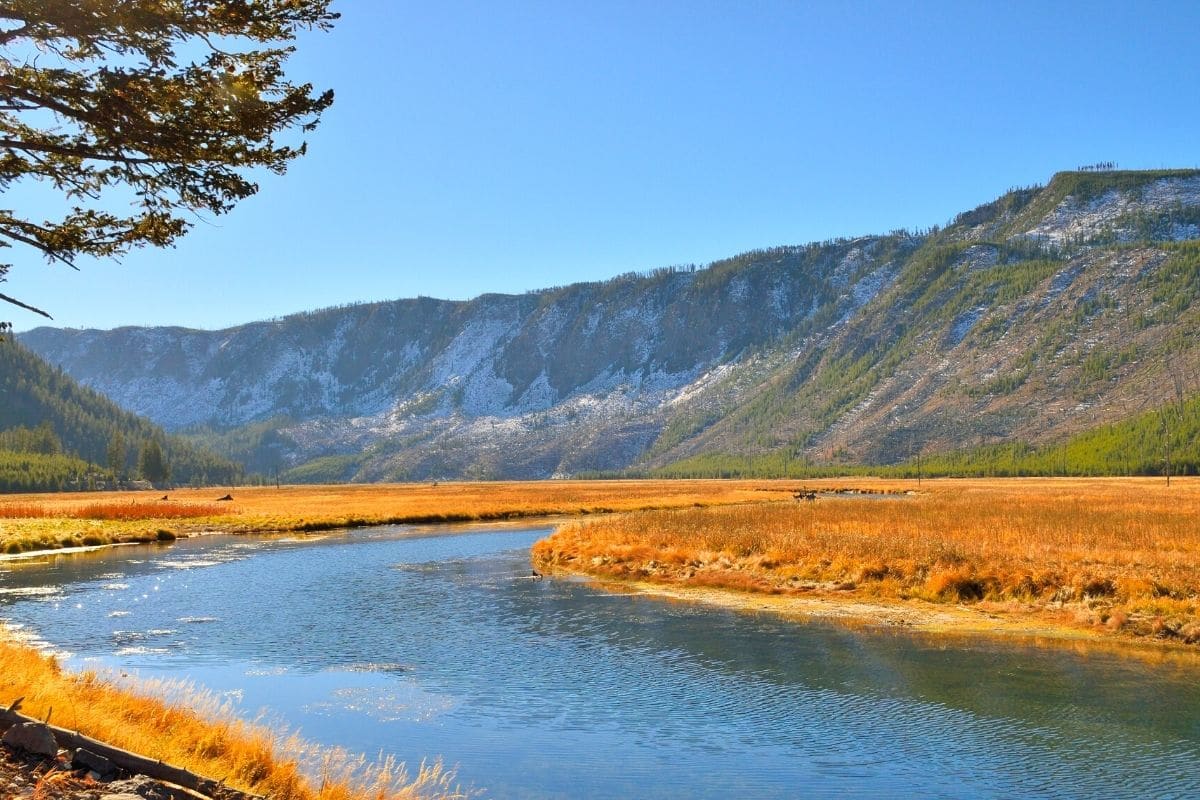Find Mediterranean’s Prized Fish
Branzino is a mild-flavored white fish native to the Mediterranean Sea and eastern Atlantic Ocean, also known as European sea bass (Dicentrarchus labrax). Here’s what you need to know:
- Common names: Branzino (Italian), loup de mer (French), lavraki (Greek)
- Appearance: Silvery with dark back, typically 1-1.5 lbs when sold whole
- Flavor profile: Mild, slightly sweet with a delicate, flaky texture
- Cooking methods: Commonly roasted whole, grilled, or pan-seared
- Nutrition: Low in calories (110 per 4oz), high in protein (22g), rich in omega-3s
When you visit a Mediterranean coastal town, you’ll likely find branzino featured prominently on restaurant menus. This neat fish has become a culinary ambassador of the region, prized for its versatility and the way it accepts flavors without losing its subtle character.
Branzino is typically sold whole, weighing between 1-1.5 pounds, which makes it perfect for serving 2-4 people. Its delicate white flesh pairs beautifully with classic Mediterranean ingredients like lemon, herbs, and olive oil.
The popularity of branzino has grown significantly in recent years, with annual aquaculture production exceeding 120,000 tonnes. Turkey leads global production, though the fish is now farmed in several countries including the United States, where indoor recirculating aquaculture systems (RAS) are providing a more sustainable alternative to traditional farming methods.
For food-loving travelers, experiencing a perfectly prepared branzino by the Mediterranean coastline represents one of those authentic culinary moments that creates lasting memories. The tradition of serving whole fish—head to tail—speaks to the region’s philosophy of respecting ingredients and minimizing waste.

Relevant articles related to branzino:
What Is Branzino? Origins, Names & Habitat
Ever wondered about that neat silver fish on Mediterranean menus? Branzino is the Italian name for European sea bass (Dicentrarchus labrax), a fish that has graced tables around the Mediterranean for thousands of years. This beautiful fish goes by many names depending on where you are:
In France, you’ll hear it called loup de mer (“wolf of the sea”) or simply bar. Spanish diners order lubina or róbalo, while Greeks ask for lavraki. Turkish seafood lovers seek levrek. Here in North America, we’ve largely adopted the Italian name—branzino for one fish, branzini when you’re lucky enough to have more than one.
Branzino is truly a Mediterranean marvel, native to coastal waters from Norway down to Senegal, throughout the Mediterranean, and into the Black Sea. What makes this fish special is its remarkable adaptability—it’s euryhaline, meaning it can thrive in waters with different salt levels, from salty coastal areas to brackish estuaries, sometimes even venturing into freshwater rivers.

While wild branzino can grow impressive—up to 26 pounds and over 3 feet long—the ones you’ll find at markets and restaurants are more modest, typically around 1-1.5 pounds and about 20 inches long. Perfect for a dinner for two!
Unfortunately, wild branzino faces challenges in its native habitat. The International Union for Conservation of Nature (IUCN) has listed it as Near Threatened as wild populations decline. This conservation concern has spurred the growth of aquaculture, which now provides most of the branzino we enjoy at restaurants around the world.
| Characteristic | Wild Branzino | Farmed Branzino |
|---|---|---|
| Flavor | More pronounced, complex | Milder, more consistent |
| Fat content | Lower | Slightly higher |
| Color | Darker silver | Lighter silver |
| Size | Variable | Uniform (typically 1-1.5 lbs) |
| Availability | Seasonal | Year-round |
| Price | Higher | More affordable |
| Sustainability | IUCN Near Threatened | Varies by farming method |
Scientific Classification & Sustainability Status
Branzino belongs to the family Moronidae and genus Dicentrarchus. Its full scientific classification runs from Kingdom Animalia through Phylum Chordata, Class Actinopterygii, Order Perciformes, to Species D. labrax.
As a slow-growing fish that takes several years to reach maturity, branzino is particularly vulnerable to overfishing pressures. Wild catches fluctuate between 8,500 and 11,900 tonnes annually, mostly from Atlantic waters.
The farming of branzino began in earnest in the late 1960s in Mediterranean coastal lagoons. Today, aquaculture production exceeds 120,000 tonnes annually, with Turkey leading global production. Branzino has become the Mediterranean’s most important cultured fish species, helping to meet demand while relieving pressure on wild stocks.
Interestingly, genetic research has revealed two distinct wild populations of European seabass—one in the Atlantic Ocean and another in the Mediterranean Sea—separated by the Almeria-Oran oceanographic front. This findy has important implications for conservation efforts and sustainable management of these beautiful fish. For more detailed scientific information, check out Scientific research on European seabass.
Branzino in Mediterranean Culture
In Mediterranean culture, branzino isn’t just dinner—it’s a celebration. In Italian homes, a whole roasted branzino often takes center stage during family feast days and holiday gatherings. The presentation of a whole fish from head to tail symbolizes abundance and prosperity, making it perfect for special occasions.
Greek tavernas celebrate branzino with their signature lavraki ladolemono—typically grilled whole over charcoal and dressed simply with lemon juice, olive oil, oregano, and garlic. This preparation perfectly captures the Greek philosophy of letting quality ingredients speak for themselves.
Along Spain’s sunny coasts, branzino (or lubina) is often prepared a la plancha—grilled on a simple metal plate—and served with alioli or a fresh herb sauce. Spanish cooking traditions emphasize ultra-fresh fish and techniques that preserve the delicate, sweet flavor.
Throughout the Mediterranean, serving branzino whole—yes, with the head and tail intact—reflects the region’s deep respect for ingredients and commitment to using everything. The ritual of filleting a whole fish at the table is part of the dining experience, often performed with pride by the head of the household or by skilled restaurant servers who make it look effortless.
When you enjoy branzino, you’re not just tasting a fish—you’re participating in centuries of Mediterranean culinary tradition.
Buying & Selecting Sustainable Branzino
Finding the perfect branzino for your dinner table is both an art and a science. This Mediterranean jewel deserves a discerning eye—after all, the quality of your fish directly impacts the magic that happens on your plate.
A typical market-ready branzino weighs about 1.25 lbs, making it the perfect size for an intimate dinner for two or as part of a larger feast. When you’re at the fish counter, let your senses guide you toward freshness. Those bright, clear eyes should practically wink at you—cloudy or sunken eyes are nature’s way of saying “pass on me today.” The skin should gleam with a metallic sheen, like silver catching the Mediterranean sun.
Take a gentle sniff—fresh branzino carries the clean scent of ocean breeze, not an overwhelming “fishy” aroma. When you press the flesh, it should bounce back with youthful resilience. Those vibrant red gills? They’re telling you this fish was swimming not long ago.
“Don’t be shy about asking your fishmonger to scale and gut the fish for you,” says Chef Maria Conti, who sources branzino for her coastal Italian restaurant. “It’s a service most are happy to provide, and it saves you from turning your kitchen into a crime scene.”
From an environmental perspective, not all branzino is created equal. Indoor recirculating aquaculture systems (RAS) earn a gold star as a “Best Choice” from Seafood Watch, while traditional Mediterranean net-pen operations raise more environmental eyebrows. If mercury concerns you, rest easy—branzino contains approximately 0.167 PPM, far below the FDA’s 1.0 PPM action level.
Looking for sustainable options? Fresh Whole Branzino from certified farms offers peace of mind with your meal. For more culinary trips beyond branzino, explore Best Culinary Experiences for your next food journey.
Tips for Choosing Whole Branzino at the Market
When you’re facing a display case full of branzino, think like a Mediterranean fisher who knows exactly what to look for. Bright, bulging eyes tell you this fish hasn’t been sitting around—they should look alert, almost as if the fish might swim away. The skin should shimmer with intact scales that reflect light like a disco ball.
Firm flesh is non-negotiable—press gently and the flesh should spring back like memory foam. When you check the gills, they should display a vibrant red color, not brown or gray. And that ocean-fresh aroma should be subtle and clean, never pungent or ammonia-like.
“Once you’ve selected your prize catch, keep it cold,” advises seafood expert Paolo Venti. “Ask for extra ice if you’ve got a long journey home, and store it in the coldest part of your refrigerator.” For optimal flavor, cook your branzino within 24 hours—this isn’t a fish that improves with age.
If fillets better suit your needs, look for moist, translucent flesh without any browning edges. The same freshness rules apply—clean smell, firm texture, and no discoloration.
Sustainable Labels & Certifications
Navigating the waters of sustainable seafood can feel like learning a new language, but a few key certifications can guide your branzino buying decisions.
The Aquaculture Stewardship Council (ASC) logo signals farms that meet strict environmental and social standards. When you spot the Best Aquaculture Practices (BAP) seal, you’re looking at fish raised with attention to environmental responsibility, animal welfare, food safety, and traceability.
European shoppers should watch for the EU Organic Aquaculture certification, which ensures your branzino enjoyed lower stocking densities and stricter antibiotic regulations. The Seafood Watch program from Monterey Bay Aquarium offers straightforward “Best Choice” or “Good Alternative” ratings to simplify your decision.
The environmental impact of your branzino largely depends on how it was raised. Traditional net-pen operations in the Mediterranean can create habitat disruption and waste discharge issues. By contrast, indoor RAS farms operate as closed systems with controlled waste management and zero risk of fish escapes—a much lighter footprint on our oceans.
When in doubt, ask questions. Where did this fish come from? How was it raised? Responsible vendors should provide traceability information that connects your dinner to its source. By choosing certified sustainable branzino, you’re casting your vote for healthier oceans with every delicious bite.
How to Cook Branzino at Home
Branzino is a home cook’s dream fish – forgiving, versatile, and impressive when served. What makes this Mediterranean treasure so special is that its bones and skin actually work in your favor during cooking, acting as natural insulators that keep the delicate flesh moist and flavorful.

There’s no single “right way” to prepare branzino – that’s part of its charm. Whether you’re a novice or experienced cook, you’ll find a method that works for your comfort level:
Roasting transforms this fish into a golden, crispy-skinned delight while keeping the interior tender. It’s wonderfully hands-off, perfect for entertaining.
Grilling adds that irresistible smoky kiss that complements the fish’s natural sweetness. There’s something magical about cooking branzino over open flames on a summer evening.
Pan-searing is ideal for fillets, creating that restaurant-worthy crispy skin that contrasts beautifully with the moist flesh beneath.
Steaming gently coddles the delicate flavor, resulting in an incredibly moist texture that practically melts in your mouth.
Poaching the fish in flavorful liquid creates an neat presentation and infuses subtle flavors throughout.
The beauty of branzino lies in its affinity for classic Mediterranean ingredients. Fresh herbs like parsley, dill, and oregano; bright citrus; pungent garlic; and good olive oil are all you need to create a memorable meal. No fancy equipment required – just a sheet pan, skillet, or grill will do the trick.
Whole Roasted Branzino: 20-Minute Method
Roasting a whole branzino might seem intimidating, but it’s actually one of the most foolproof methods with stunning results. Here’s my favorite 20-minute approach:
Preheat your oven to 400°F (200°C) while you pat the fish thoroughly dry with paper towels. Using a sharp knife, make 2-3 diagonal slashes on each side, cutting just down to the bone. These cuts serve double duty – they help the fish cook evenly and create little pockets for flavors to penetrate.
Season the fish generously inside and out with salt and pepper, then stuff the cavity with thin lemon slices, fresh dill sprigs, and a few peeled garlic cloves. A generous drizzle of olive oil over the top helps develop that beautiful crispy skin.
Place your prepared fish on a parchment-lined baking sheet and roast for 15-20 minutes. You’ll know it’s ready when the flesh turns opaque and flakes easily when tested with a fork. For that extra-crispy skin that makes everyone swoon, switch your oven to broil for the final 3 minutes.
The result? A showstopping centerpiece with crispy skin and moist, aromatic flesh that easily pulls away from the bone. Serve with additional lemon wedges and your best olive oil for drizzling. For more inspiration, check out this Branzino recipe inspiration.
Pan-Seared Branzino Fillets
Sometimes you want all the flavor with less fuss, and that’s where fillets shine. Pan-searing delivers restaurant-quality results in minutes:
Start by asking your fishmonger to fillet the branzino for you, making sure they leave the skin on. The secret to perfectly crispy skin is thoroughly drying the fillets with paper towels – don’t skip this step!
Season the flesh side with salt, pepper, and perhaps a light dusting of garlic powder. Heat a heavy skillet over medium-high heat, add a tablespoon of good olive oil, and wait until it’s hot but not smoking.
Place your fillets skin-side down (this is crucial) and gently press them with a spatula for the first 30 seconds to prevent curling. Let them cook undisturbed for about 3 minutes until the skin turns gloriously golden and crisp.
Flip the fillets carefully and cook for just 2 more minutes. Here comes the chef’s touch: add a tablespoon of butter to the pan along with some fresh herbs and a squeeze of lemon juice, then baste the fillets with this fragrant mixture for another minute.
The entire process takes less than 10 minutes and delivers fillets with shatteringly crisp skin and tender, moist flesh that will impress even the most discerning dinner guests.
Side Dishes & Wine Pairings
Branzino’s delicate flavor profile deserves sides that complement rather than overwhelm. Greek-style roasted potatoes with lemon and oregano make a hearty accompaniment, while grilled asparagus with a squeeze of lemon brings a fresh, green element to the plate.
Lemon rice studded with fresh herbs adds substance without heaviness. For something lighter, try a classic Mediterranean salad with ripe tomatoes, crisp cucumbers, and briny feta. Sautéed spinach with garlic makes a beautiful bed for your fish, the vibrant green providing a stunning contrast.
The wine you choose can lift your branzino experience to new heights. Look for crisp, light-bodied whites that mirror the delicate nature of the fish. Spanish Verdejo offers bright citrus notes and subtle mineral undertones, while Sauvignon Blanc brings refreshing acidity and herbal notes that echo your seasoning.
Greek Assyrtiko, with its crisp minerality, feels like a natural match for Mediterranean seafood. Italian Vermentino delivers subtle floral and citrus characteristics, and Spanish Albariño contributes stone fruit flavors with a touch of salinity that seems made for seafood.
At The Dining Destination, we believe that understanding how to prepare iconic dishes like branzino at home is part of the culinary journey. For more inspiration on global food experiences, visit our guide to World Cuisine Exploration.
Nutrition & Health Benefits of Branzino
Branzino isn’t just a Mediterranean delicacy—it’s also a nutritional superstar that delivers impressive health benefits without weighing you down. If you’re looking to add more seafood to your diet, this lean fish deserves a prime spot in your meal rotation.

When you enjoy a 4-ounce serving of branzino (about the size of your palm), you’re getting a protein-packed meal with only 110 calories. That same portion delivers a whopping 22 grams of high-quality protein while keeping the fat content remarkably low at just 2.5 grams. For anyone watching their cholesterol, branzino contains a modest 45mg, making it heart-friendly as well.
What makes branzino truly shine is its impressive nutrient profile. Each serving provides about 0.87g of omega-3 fatty acids—not as much as fattier fish like salmon, but still a meaningful contribution to your weekly intake of these brain and heart-boosting fats. Your body will thank you for the selenium too—branzino delivers about 60% of your daily needs of this powerful antioxidant that supports everything from DNA production to thyroid health.
For those concerned about mercury in seafood (especially pregnant women), branzino offers peace of mind with its low mercury content of just 0.167 PPM. This places it firmly in the “good choice” category according to FDA guidelines, making it safe to enjoy about once per week during pregnancy.
Key Nutrients per Standard Serving
That modest 4-ounce portion of branzino packs quite a nutritional punch. Beyond the protein (which provides 42% of your daily needs), you’re getting a meaningful dose of vitamin B6 (25% DV)—crucial for brain function and mood regulation—and vitamin B12 (15% DV), which helps form red blood cells and supports neurological function.
The mineral content is equally impressive. The standout is selenium (60% DV), but you’re also getting phosphorus (20% DV) for bone health, magnesium (8% DV) for muscle function, and smaller amounts of iron and vitamin D. All this comes in a low-calorie package that won’t derail your health goals.
What’s particularly special about branzino is how it delivers these nutrients in a form that’s gentle on the digestive system and easily absorbed by the body. The protein is complete, meaning it contains all essential amino acids your body needs but can’t produce on its own.
Who Should Eat Branzino & How Often
Branzino fits beautifully into almost any healthy eating pattern. Athletes and active individuals appreciate its high protein-to-calorie ratio, which supports muscle recovery without excess calories. If you’re focused on heart health, the omega-3 content and low saturated fat make branzino an excellent choice.
Pescatarians often accept branzino as a versatile protein source that works in countless recipes. Those following kosher dietary laws can enjoy it too, as branzino has both fins and scales.
For pregnant women, branzino‘s low mercury status makes it one of the safer seafood options—though limiting consumption to once weekly is still recommended. The omega-3 fatty acids are particularly beneficial during pregnancy for fetal brain development.
Most health organizations suggest eating seafood twice weekly, and branzino is perfect for regular rotation in your meal plan. The only people who should avoid it are those with fish allergies. While allergic reactions specifically to branzino aren’t common, those with other fish allergies may experience cross-reactivity.
Whether you’re dining at a Mediterranean restaurant on your travels or cooking at home, branzino offers that rare combination of culinary delight and nutritional benefits—proof that healthy eating doesn’t have to sacrifice flavor or satisfaction.
Frequently Asked Questions about Branzino
Is branzino always farm-raised?
While wild branzino still swims the Mediterranean Sea and eastern Atlantic Ocean, most of what you’ll find at markets and restaurants today comes from farms. This shift to aquaculture happened naturally as wild populations earned a “Near Threatened” conservation status, making farming both environmentally necessary and economically smart.
Wild-caught branzino does offer a slightly more complex flavor profile—thanks to its varied natural diet—but it comes with a higher price tag and seasonal availability. Most seafood lovers actually prefer the milder, more consistent taste of farmed branzino, which is available year-round.
If you’re shopping for branzino in the United States or anywhere far from Mediterranean shores, you’re almost certainly looking at farm-raised fish. For the most eco-friendly choice, seek out fish raised in indoor recirculating aquaculture systems (RAS). These closed systems have a significantly smaller environmental footprint than open net-pens in the ocean.
Can you eat branzino skin?
Absolutely! Not only can you eat branzino skin, but you’d be missing out on one of the best parts of the fish if you didn’t. When properly cooked, the skin transforms into a crispy, flavorful delight that adds wonderful texture contrast to the tender flesh beneath. The skin also contains a good portion of those beneficial omega-3 fatty acids everyone’s after.
To get that perfect crispy skin when cooking branzino at home:
- Make sure your fish is properly scaled (your friendly fishmonger will handle this if asked)
- Pat the skin thoroughly dry with paper towels before cooking
- Use high heat when grilling or pan-searing to achieve maximum crispiness
- For whole roasted fish, finish with a quick blast under the broiler for extra crunch
The only time you might want to skip the skin is when poaching or steaming, as these gentle, moist cooking methods leave the skin soft rather than crispy, which isn’t nearly as appealing.
What are good substitutes if branzino is unavailable?
Can’t find branzino at your local market? Don’t worry—several other fish can pinch-hit beautifully in your Mediterranean-inspired recipes:
Black sea bass offers perhaps the closest match in both flavor and texture, while red snapper brings a similar size and texture with a slightly more assertive flavor profile. Orata (also called dorade or sea bream) makes another excellent substitute with its comparable size and slightly sweeter taste.
For more widely available options, striped bass works well despite being larger, and tilapia can stand in when budget is a concern, though it’s notably milder in flavor. Barramundi (Australian sea bass) delivers similar characteristics for those in the Pacific region.
When adapting recipes, the thickness of your substitute fish matters more than anything else. A whole fish substitute should be similar in size to branzino (1-1.5 lbs) to maintain proper cooking times. For fillets, adjust cooking time based on thickness—thinner for flounder, thicker for cod or halibut.

Conclusion
Branzino embodies everything we love about Mediterranean cuisine—honest, neat, and centered on quality ingredients that speak for themselves. There’s something magical about enjoying this fish with your toes in the sand at a Greek taverna, but bringing that experience to your own dinner table can be just as rewarding.
Throughout this guide, we’ve walked through selecting branzino with bright eyes and that telltale ocean-fresh scent, understanding which sustainable certifications matter, and mastering techniques from whole roasting to perfect pan-searing. But this fish offers more than just culinary delight—it’s a nutritional powerhouse that fits beautifully into a health-conscious lifestyle.
If there’s one thing I hope you take away from our branzino journey, it’s confidence. Don’t let cooking a whole fish intimidate you—the bones and skin actually make it more forgiving than delicate fillets. Accept the Mediterranean philosophy of simplicity: a drizzle of olive oil, a squeeze of lemon, and a sprinkle of herbs are all you need to let this fish shine.
Remember these essentials as you explore branzino:
Look for clear eyes, metallic skin, and that fresh sea breeze aroma when selecting your fish. When possible, choose branzino raised in indoor recirculating aquaculture systems, which offer the most sustainable option with minimal environmental impact. Keep your seasonings simple to honor the delicate, sweet flavor that makes this fish special. And don’t forget to enjoy the nutritional benefits—low in calories but rich in protein, selenium, and brain-boosting B vitamins.
At The Dining Destination, we believe food is more than sustenance—it’s a pathway to understanding cultures and connecting with traditions that span generations. Branzino perfectly illustrates how a single ingredient can tell the story of an entire coastline, its people, and their relationship with the sea.
Whether you’re planning your next Mediterranean getaway or bringing those sun-drenched flavors into your kitchen on a rainy Tuesday, we hope this guide inspires you to explore the wonderful world of branzino—a fish that transforms from everyday staple to celebration centerpiece with equal grace.
For more insights into creating meaningful culinary experiences and embracing sustainable food choices, explore our articles on sustainable dining and world cuisine exploration.








1 thought on “A Practical Guide to Branzino: What It Is and How to Enjoy It”
Pingback: The Definitive Guide to Mahi Mahi: Facts, Habitat & More - The Dining Destination
Comments are closed.